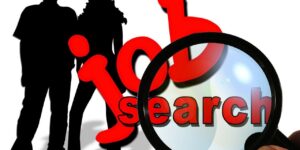
Logic Models Measure Educational Success
Pam Sornson, JD
March 15, 2o22
College success doesn’t always equate to career success. However, the drive to improve both college and career success metrics is taking on significantly more meaning as emerging economic realities look to higher education institutions to match evolving workforce talent with growing workforce demand. Understanding how the two connect – college success and career success – requires an understanding of the elements of each and how they interact with each other. Traditional logic models provide a framework to use for that evaluation and process.

Higher Education Evolves
The evolution of America’s higher education systems began in the late 19th Century, as religious orders developed more organized ‘colleges of higher learning’ that surpassed the efforts of trade-based apprenticeships offering ad hoc job training skills. Middle and lower-class people typically pursued work-related apprenticeships because they couldn’t afford the advanced ‘university’ training costs. That more formal training focused on more theoretical scientific studies and was made available only to those white males who could afford it.
In neither case did employers or educators devise a strategy to measure the ‘success’ of either educational option. Neither system tracked the outcome for the student after the education process was complete. When student statistics were measured at all, they focused on the educational system’s success – the number of apprentices who completed their training or the number of graduates who completed their programs, as examples.
It’s only recently that systemic and social leaders began recognizing the value of measuring how well educational efforts resulted in successful jobs and careers for students and, by extension, economic success for the businesses that hired them. Those ‘education to career success’ metrics are now the focus of companies and industries with a vested interest in the educational processes that develop their current and future workforce. Measuring and sharing those metrics will help all invested participants in the higher education spectrum improve their contribution to it:
Schools will use the data to develop training programs that are relevant to potential employers.
Businesses will use the data to direct training efforts to reflect their particular needs while also building their enterprise with the support of a well-trained labor force.
Governments will use the data to track how their higher education investments contribute to the economic growth of the community.
Taking those measurements, however, raises questions also relevant to all participants:
What should be measured and why?
Who should guide and/or implement the measurement process?
How should the resulting metrics be reported?
How should the resulting metrics be used?
It seems a standardized College/Career success measurement protocol would be helpful, as organizations dedicate more time, attention, and money connecting educational programming to economic success.

Measuring Quality Using Standardized Logic Models
The COVID pandemic only exacerbated the already existing mismatch between current skills development programming and emerging laborforce demands. As that anomaly recedes, it is becoming more critical to account for and measure the elements that build and determine the success of efforts on both sides of the concern. Standardized ‘logic models’ provide a framework that structures the actions of and connects the two. Using these familiar tools will help all concerned participants better understand how their respective efforts can combine into a successful student/employee/career.
Logic Model Components
Many industries use logic models to identify the necessary elements that will make up their successful projects. While each individual element differs based on the organization and anticipated effort, the model itself segregates those efforts into classes that flow from a listing of resources through a record of related activities and to the final result, which, in this case, would be a well-trained, well-compensated worker.
Inputs
Every successful endeavor starts with an accumulation of ‘inputs,’ including the financing, staff, and organizational resources needed to launch and complete the project. To build a successful employee and economic contributor:
Governments will ‘input’ the resources needed to ensure schools have the necessary tools to furnish relevant educational programming.
Schools will ‘input’ the coursework and programming that students need to pursue the career of their choice.
Employers will ‘input’ their occupational requirements to ensure the student’s training is relevant to their needs.
Activities
The inputs provide the structure and support for ‘activities.’ Activities are actions that are relevant to processes and goals that offer the incremental knowledge, practice, and experience that will eventually meld into the fuller expression of the occupation.
Activities at school include coursework, internships, and basic career development skills, among many others.
Activities by businesses include collaborations with faculty to develop appropriate training and classwork materials.
Activities by governments include securing adequate funding, assisting with industry development, and facilitating other economic growth opportunities.
Outputs
Many confuse ‘outputs’ with ‘outcomes.’ The concepts are different, however. ‘Outputs’ relates to the incremental steps forward toward ‘outcomes,’ so there are many outputs throughout the process that contribute to the eventual outcome.
At the school, student ‘outputs’ include completing first and second-year level coursework, completing internships, developing resume’s, etc.
For businesses, outputs include contributions to training materials and participation in job fairs, as examples.
For governments, outputs include funding programming, gathering and sharing relevant industry data, and communicating expectations to constituents based on project metrics.
Outcomes
An ‘outcome’ is the culmination of the combined inputs, activities, and outputs. In this case, ‘outcomes’ will mean different things to the various entities:
For schools, successful outcomes will be graduated students who find well-compensated work in their chosen occupation. Tracking ‘student outcomes’ will no longer simply track the number of graduates or how long it took learners to complete their programs.
For businesses, a successful outcome could mean
ongoing access to a well-developed yet flexible program that trains to their workforce needs,
a steady supply of well-trained workers, and
even an upskilled workforce of existing employees who now have more relevant and valuable skills.
For governments, positive ‘outcomes’ could mean more workers/tax payors, fewer people drawing from social programs, more businesses opening because of the strong labor force focus, and enhanced government revenues flowing from a more robust economy.
More organizations are looking for proof that their college-educated potential new hires have the skills and abilities they need to do their work. Every organization involved in the workforce development sector should consider how their enterprise can offer those assurances. Collaborations that intend to improve student career outcomes will be better able to plan, implement, and find success if they streamline the individual efforts of each participant through a logic model framework to collectively pursue the ultimate goal of a well-trained workforce.


